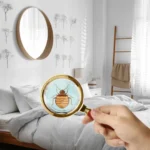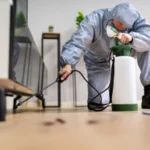When dealing with pests in your home or business, it’s natural to wonder what pest control professionals actually do to handle the problem. Whether it’s ants, termites, bed bugs, or rodents, understanding how these services work can help you make the best decision for your pest situation. In this blog, we’ll break down the key tasks pest control services perform, giving you a clearer picture of how they keep your space pest-free.
1. Inspection and Assessment
The first step of any pest control service is a thorough inspection. Pest control professionals will visit your property to assess the extent of the infestation. During this assessment, they’ll identify the type of pests present, how widespread the infestation is, and the potential causes, such as entry points or conducive environments like standing water or clutter.
Why it’s important:
- Identifies the type of pest for the correct treatment.
- Helps create a personalized plan based on the severity of the problem.
- Prevents future infestations by locating the root cause.
2. Customized Treatment Plans
Once the inspection is complete, pest control specialists create a treatment plan tailored to your specific needs. The plan could include a one-time treatment or a series of treatments, depending on the type and severity of the infestation.
Common treatments include:
- Chemical treatments: Use of insecticides or rodenticides that are safe for humans and pets.
- Traps and baits: Setting traps for rodents or bait stations for ants and cockroaches.
- Exclusion techniques: Sealing up entry points to prevent pests from entering the building.
3. Extermination or Removal
The actual removal process depends on the pest type. For instance, in the case of bed bugs, treatments might involve steam cleaning and insecticide applications, while for rodents, the focus may be on trapping and removing the pests from your property. In all cases, pest control experts ensure that the treatments are safe and effective.
Common pest removal methods:
- Rodent control: Using traps, bait stations, and rodent-proofing techniques to eliminate and prevent mice and rats.
- Cockroach control: Applying targeted insecticides, baits, and exclusion methods to remove cockroach infestations.
- Termite control: Utilizing advanced treatment options to eradicate termite colonies and protect your property from further damage.
4. Follow-up Visits
Pest control isn’t always a one-time fix. Many pest issues require follow-up visits to ensure the problem has been fully eradicated. During these follow-ups, professionals will check traps, reapply treatments if necessary, and inspect to confirm the pests haven’t returned.
Benefits of follow-up visits:
- Ensures complete removal of pests.
- Monitors for signs of recurring infestations.
- Provides peace of mind that the issue is fully resolved.
5. Preventive Measures
Effective pest control services go beyond just eliminating current infestations—they also focus on prevention. Following the appropriate prevention measures is considered one of the most important processes to ensure your property is completely pest-free. After the pests have been dealt with, professionals will recommend preventive measures to stop them from returning.
Examples of preventive measures include:
- Sealing cracks: Blocking possible entry points like gaps around windows and doors.
- Removing food and water sources: Ensuring proper storage of food and fixing leaks.
- Regular maintenance: Ongoing pest control services to maintain a pest-free environment.
Why You Should Consider Professional Pest Control
While DIY pest control might seem appealing, pest control services in Manchester, NH offer several advantages, including expertise, effective treatments, and safety. Professionals know how to handle dangerous chemicals, identify hidden infestations, and provide lasting solutions to your pest problems.






